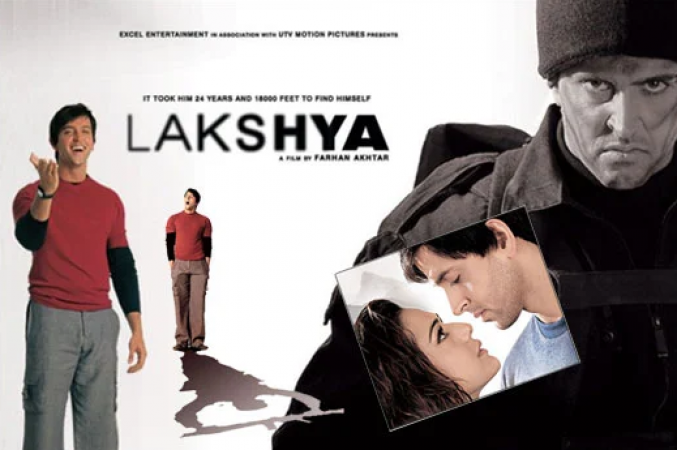
Pushing the limits of creativity and technology is frequently necessary in the world of filmmaking to get jaw-dropping shots. One such outstanding achievement occurred during the production of the 2004 Indian war movie "Lakshya," which was directed by Farhan Akhtar and starred Hrithik Roshan. A historic cinematic event took place on October 13, 2003, in Ladakh, India, high above the Tanglangla Pass. It was the highest crane shot ever used in a feature film; it was a stunning accomplishment that revealed the team's commitment, creativity, and spirit of adventure. In this piece, we explore the fascinating tale that led to this ground-breaking crane shot in "Lakshya."
A war drama called "Lakshya" is set in the year 1999, during the Pakistani-Indian Kargil War. The objective of the movie was to convey the ferocity and difficulties that the soldiers encountered during the fighting. The Tanglangla Pass, which is 17,582 feet above sea level, offered a breathtakingly beautiful but difficult location for filming. It was at this point that the plan to pull off a world-record crane shot began to take shape.
The high-altitude crane shot for "Lakshya" was the brainchild of Farhan Akhtar, who is renowned for his avant-garde approach to filmmaking. In order to transport viewers to the rocky landscapes where the battle for Kargil took place, his goal was to create a visually immersive experience. Technical mastery was necessary, but it also took unwavering resolve to accomplish this.
Numerous technical difficulties arose from shooting at such high altitudes. The crew's fortitude was put to the test by thin air, extreme cold, and unpredictability of the weather. For the team to work efficiently in these challenging circumstances, they had to modify their tools and processes. In addition, safety measures were crucial given the dangers of high-altitude filming.
A 24-foot Giraffe crane was specially brought to the Tanglangla Pass to carry out the famous crane shot. The Giraffe crane, which is renowned for its adaptability and stability, was selected because of its capacity to deliver sweeping and dynamic shots while maintaining a steady frame—a crucial component in capturing the breathtaking landscape.
Farhan Akhtar, Christopher Popp, and Hrithik Roshan, along with the rest of the cast, gathered at the Tanglangla Pass on October 13, 2003. The crew meticulously worked to make sure every element of the Giraffe crane setup was done correctly. As the camera followed the protagonist on his or her journey, the shot was ready to capture a crucial moment in the movie.
The crew stood in awe as the scene unfolded beneath them as the cameras rolled and the crane reached its maximum height. In addition to the Himalayas' stunning physical beauty, the shot perfectly captured the film's story's intense emotional content.
The crane shot in "Lakshya" is proof of the film industry's unyielding spirit. It represented the success of human effort, technical know-how, and creative imagination. The shot served as a visual metaphor for the relentless pursuit of one's goals, a major theme in "Lakshya," in addition to adding a level of authenticity to the movie.
The "Lakshya" crane shot made an enduring impression on Indian cinema. It established a brand-new standard for the level of commitment and inventiveness that could be used in filmmaking. Filmmakers and cinematographers are still motivated by the shot's legacy to push the limits of what is creatively and technically possible.
In the history of Indian cinema, "Lakshya" still stands as the highest crane shot ever completed for a feature film. It is evidence of the tenacious pursuit of excellence, the bravery to face enormous obstacles, and the potency of creative vision. This outstanding shot not only improved the visual storytelling of the movie, but it also provided inspiration for upcoming generations of filmmakers to push the boundaries of their art on both a literal and figurative level. In the end, it serves as a representation of the unwavering spirit of innovation and exploration that characterizes the world of cinema.
How 'Aaja Nachle' Became an Iconic Bollywood Anthem
Brazilian President Lula da Silva Applauds 'RRR' at G20 Summit
Abhishek Bachchan's Deleted Scene in 'Kabhi Khushi Kabhie Gham'